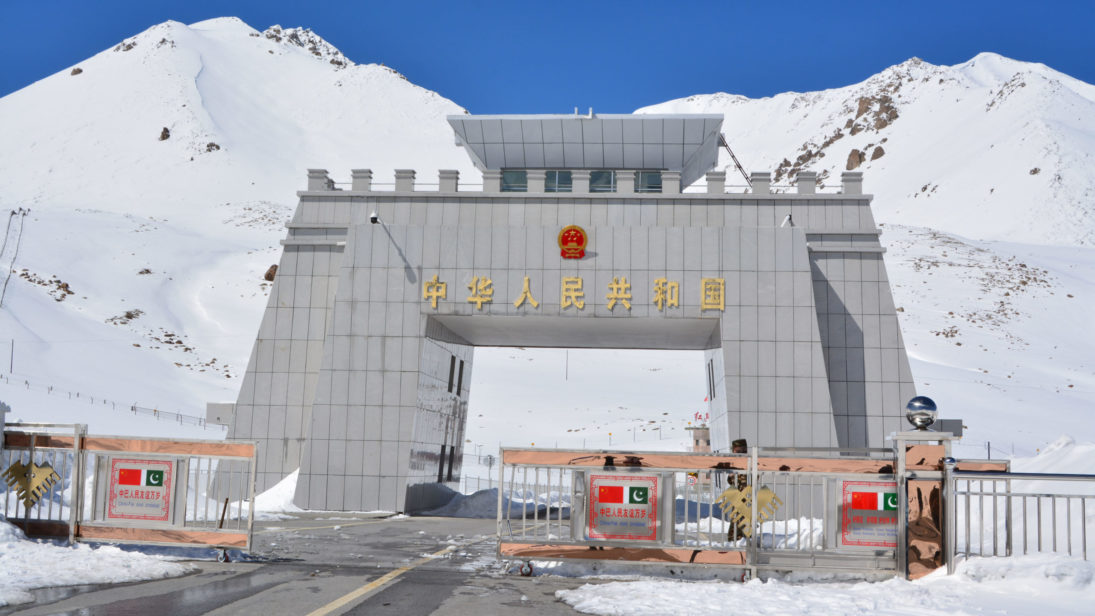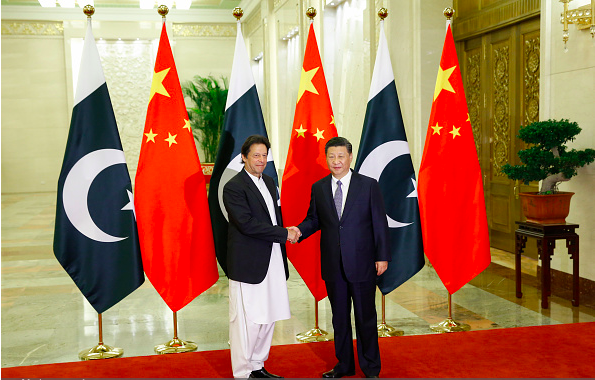
2019 has been an uneasy year in Pakistan-China relations, marred by policy divergences and measured recalibration. On Pakistan’s part, the policy divergences emanate from domestic concerns over the gains expected to be accrued through the China-Pakistan Economic Corridor (CPEC) project while on China’s part, they are driven by expected losses if the project does not come to fruition. However, despite divergences and anxieties over economic issues, China remains essential to Pakistan’s security needs, especially in the wake of the developments of August 5 in Kashmir.
The anxiety in Pakistan set in immediately with the Pakistan Tehreek-e-Insaf (PTI)’s ascent to power, with the prime minister’s adviser on commerce and industry asserting that CPEC needed to be reviewed, slowed down, and put on hold for a year or stretched out for another five years. In early 2019, the government’s communications minister leveled a corruption charge against CPEC’s Multan-Sukkur motorway project, evoking a strong rebuttal from the Chinese firm. Meanwhile in China, after initial reluctance, Beijing paved the way for Pakistan’s eventual gray-listing by the Financial Action Task Force (FATF) as well as withdrew its technical hold – a measure that it had put in place in the past – thus, allowing for Jaish-e-Mohammad cheif Masood Azhar’s designation as a global terrorist by the UN. However, despite policy divergences, 2019 ended with a renewed effort on Pakistan and China’s part to push through CPEC projects, a momentum that is expected to continue into the new year.
Pakistan and China: Straying Apart
In the past few years, arguments characterizing CPEC as a neo-imperial venture at par with the British East India Company have gained credence in Pakistan’s domestic space.
In the past few years, arguments characterizing CPEC as a neo-imperial venture at par with the British East India Company have gained credence in Pakistan’s domestic space. Such critique of CPEC hinges on the project’s high debt costs on Pakistan’s economy, lack of transparency, local stakeholders’ participation quandaries as well as aggravating inter-provincial inequalities. Moreover, the influx of Chinese citizens and their involvement in crime and illegal activities, such as human-trafficking and skimming fraud, bodes ill for China’s public diplomacy and image in Pakistan.
Pakistan’s relations with the United States also adversely affected its ties with China. Resetting ties with the United States acquired greater salience under the PTI government as the United States pursued peace talks with the Taliban. President Donald Trump and Prime Minister Imran Khan had a mutually beneficial exchange in July, where Trump offered to mediate between India and Pakistan in Kashmir, and Pakistan garnered domestic praise for highlighting the Kashmir cause internationally. With Pakistan looking to the United States to ease out FATF and IMF conditions and President Trump speaking of enhancing the United States’ trade and investment relationship with Pakistan, Islamabad’s ties with Beijing took a back seat.
On China’s side, concerns over the slowing pace of CPEC are manifest as Beijing has demanded a change in the portfolio of some Pakistani ministers to ensure timely compliance of projects. Though a ministerial change in the Planning Ministry at the end of the year seems to have addressed several of China’s concerns, with the new minister reinforcing the Pakistan-China relationship, the fact that it needed to be reinvigorated to begin with indicated that the relationship had gone astray for a while. China also expressed concerns over Pakistan’s internal security situation and requested the government to incorporate Gilgit-Baltistan as a province since Beijing worried that the region’s disputed status would likely nullify expected economic gains from the project. China’s discomfort with Pakistan was also on display when the Pakistani government invited Saudi Arabia to develop a refinery at Gwadar and the information minister referred to the project as part of CPEC but had to backtrack the next day.
 Pakistan and China: Staying Together
Pakistan and China: Staying Together
Despite socio-economic anxieties, Pakistan’s geopolitical imperatives—principally its strategic competition with India—make it dependent on China and this remained true in 2019. Indian Prime Minister Narendra Modi’s withdrawal of Kashmir’s special status affected both Pakistan and China, compelling Pakistan’s foreign minister to rush to China for support on the matter. China responded by objecting strongly to India including Ladakh in its administrative jurisdiction. In fact, China backed Pakistan’s letter to the UN and was instrumental in the convening of a closed door session of the UN Security Council on Kashmir. China also recently backed Pakistan’s plea of placing four Indian citizens under the UN’s terrorism laws. And China’s helped stave off Indian pressure on the FATF to blacklist Pakistan as a terror-sponsoring state. China’s stance reiterates support for Pakistan’s anti-terrorism measures while condemning states – mainly India – for politicizing the FATF platform. In doing so, China believes that engaging Pakistan in its anti-terrorism drive is a better strategy than punitive action.
A major irritant in Pakistan-China relations perhaps centers on increasing American fears that CPEC makes it difficult for Pakistan to carefully navigate between its American and Chinese equities.
As a measured sign to expedite CPEC after a year of uncertainty, Pakistan established the China-Pakistan Economic Corridor Authority (CPECA) to ensure the timely completion of the corridor’s remaining projects, including the creation of Special Economic Zones (SEZs). In addition, the new planning minister denounced criticisms of CPEC adding to Pakistan’s debt burden asserting instead that Pakistan stands to benefit from the corridor. Prime Minister Khan also dodged questions on alleged human rights violations in China’s Xinjiang province, dissonant with his stringent criticism of rising Islamophobia in the West. Overall, while Pakistan engaged in a measured recalibration of its relationship with China under the PTI government, post-August 5 developments in Kashmir portend sustained engagement between the two, as Pakistan looks for Chinese support against Indian atrocities in Kashmir.
What Does the Future Hold?
What can one expect in 2020? If Pakistan’s economic fears of dependence and subjugation compel a relative distancing from China, its geopolitical imperative force it into China’s orbit. With the present PTI government clamping down hard on its rhetoric of anti-corruption and accountability, it is expected to put tougher conditions on China. Doubts remain, however, over the extent to which the government can succeed in doing so. Similarly, China is expected to push through CPEC in coordination with Pakistan so that the project approximates success. If it does not, that puts into question China’s larger Belt and Road Initiative as well as the real and imagined success of participating states, and dampens its global economic outreach towards Asia, Africa, and Latin America.
A major irritant in Pakistan-China relations perhaps centers on increasing American fears that CPEC makes it difficult for Pakistan to carefully navigate between its American and Chinese equities. Will American objections compel Pakistan to stray away from China? Not necessarily, because this depends on what the United States has to offer to Pakistan in times of domestic economic distress. For the present time, a precarious security situation in South Asia post the August 5 developments implies a strong push forward in Pakistan-China relations as Pakistan explores ways and means to balance its regional security needs vis-à-vis India with domestic economic growth and development opportunities via CPEC.
***
Image 1: Wikimedia Commons
Image 2: Getty Images News Pool


